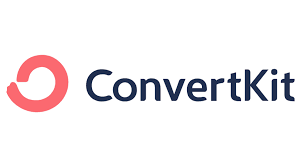Hey there! In the ever-evolving world of email marketing, choosing the right tool can be a game-changer for your business. Today, we’re pitting two giants against each other: ConvertKit and VerticalResponse. Both are stellar in their own right, but which one is the perfect fit for you in 2024? Let’s dive in and find out.
| ConvertKit | VerticalResponse |
|---|---|
 |  |
| G2 Score – 4.4 out of 5 stars | G2 Score – 3.3 out of 5 stars |
| TrustRadius Score – 8.8 out of 10 | TrustRadius Score – 10.0 out of 10 |
Ease of Use: Navigating the Platforms
In the realm of email marketing, the ease of use of a platform can significantly impact your productivity and overall experience. Let’s compare ConvertKit and VerticalResponse to see which one offers a more user-friendly experience.
ConvertKit: Simplified and Streamlined
ConvertKit has been a favorite for its intuitive design. Right off the bat, ConvertKit greets you with a clean, minimalistic dashboard. It’s designed with non-tech-savvy users in mind, ensuring that you don’t get lost in a maze of features. Whether you’re setting up a new campaign or navigating through your subscriber list, the process is straightforward.
With ConvertKit, setting up a campaign is a breeze. The platform guides you through each step with clear instructions – it’s like having a friendly expert holding your hand. This is particularly great for those who are new to email marketing or short on time.
What’s truly impressive about ConvertKit is how it simplifies automation. You can set up complex email sequences with just a few clicks, making it a dream for marketers who want to save time while maintaining a personalized touch with their audience.
VerticalResponse: User-Friendly with a Twist
VerticalResponse takes a slightly different approach, focusing on providing a robust yet accessible platform. VerticalResponse’s interface is clean and well-organized. While it might not be as minimalist as ConvertKit’s, it offers easy navigation. You won’t spend hours figuring out where everything is, which is a big plus.
The platform boasts a drag-and-drop email builder, making it super easy to design your emails. You can play around with different layouts and styles without needing any design experience. It’s fun, intuitive, and lets you unleash your creativity.
VerticalResponse offers a wealth of resources, including tutorials and templates, which are incredibly handy, especially if you’re just starting out. These resources can help you get the most out of the platform and up your email marketing game.
The Verdict
When it comes to ease of use, both ConvertKit and VerticalResponse offer excellent experiences but in their unique ways. ConvertKit is all about simplicity and efficiency, perfect for those who want a no-fuss, straightforward platform. VerticalResponse, while also user-friendly, provides more in the way of creative freedom and support resources, which can be a big draw for those who like to experiment with their campaigns.
Feature Set: The Power Behind the Platforms
When choosing an email marketing tool, the range and depth of features offered can significantly impact your marketing strategy’s effectiveness. Let’s delve into the feature sets of ConvertKit and VerticalResponse to see which platform offers the most robust capabilities.
ConvertKit: Feature-Rich for the Modern Marketer
ConvertKit is designed with a feature set that caters to the needs of contemporary digital marketers and content creators. ConvertKit’s automation features are a standout. They allow you to create dynamic email sequences that respond to subscriber actions. This means you can automate a large part of your email marketing, from welcome emails to complex, multi-step campaigns, with ease and precision.
The platform offers detailed subscriber tagging and segmentation. You can tag subscribers based on their interests, interactions, and behaviors. This level of detail enables you to tailor your content to different segments of your audience, increasing engagement and conversion rates.
ConvertKit offers a wide array of integrations with other tools and services, from e-commerce platforms to membership sites. This connectivity ensures that you can create a seamless workflow between your email marketing and other aspects of your online presence.
VerticalResponse: Comprehensive Tools for Diverse Needs
VerticalResponse packs a punch with its comprehensive set of features that cater to a wide range of marketing needs. With an extensive library of email templates, VerticalResponse makes it easy to create visually appealing emails. These templates cover various themes and purposes, ensuring that you can find the perfect fit for any campaign.
A unique feature of VerticalResponse is its integration with social media platforms. You can create, manage, and track social media posts alongside your email campaigns. This integrated approach can be a huge time-saver and boost your overall digital marketing strategy.
VerticalResponse offers robust contact management features. You can easily import, export, and organize your contacts. Plus, the platform provides tools for maintaining a clean and efficient list, which is crucial for effective email marketing.
The Verdict
In terms of features, both ConvertKit and VerticalResponse offer powerful tools, but they cater to different needs and preferences. ConvertKit is ideal for those who need advanced automation and detailed subscriber management. It’s especially suited for marketers who want to create highly personalized email journeys. VerticalResponse, on the other hand, is great for businesses that want a broad range of features, including social media integration and diverse email templates, to enhance their marketing efforts.
Customer Support and Resources: Ensuring a Smooth Journey
The quality of customer support and the availability of learning resources can make a huge difference in your email marketing journey. Let’s compare the support systems of ConvertKit and VerticalResponse to understand how they help users navigate any challenges.
ConvertKit: A Support System That Cares
ConvertKit has built a reputation for providing exceptional customer support and extensive learning resources. ConvertKit offers responsive and helpful customer support. Users can reach out via email or live chat and expect quick, informative responses. This rapid support is invaluable, especially when dealing with time-sensitive email campaigns.
Apart from hands-on support, ConvertKit provides a plethora of educational content. Their resources include detailed guides, informative blog posts, and free webinars. These materials are not just about using ConvertKit; they offer valuable insights into broader email marketing strategies.
ConvertKit nurtures a vibrant community of users. This community is a goldmine for peer-to-peer support and networking. Users can share experiences, seek advice, and learn from each other’s successes and challenges.
VerticalResponse: Support with Added Personalization
VerticalResponse also places a strong emphasis on customer support and educational resources. VerticalResponse offers personalized assistance to its users. Their customer support team is known for being attentive and thorough, ensuring that each query is resolved satisfactorily.
Like ConvertKit, VerticalResponse provides a range of learning materials. These include how-to guides, FAQs, and video tutorials. Their content is designed to be accessible, helping users quickly grasp the nuances of email marketing.
VerticalResponse keeps its users informed and up-to-date with regular tips and updates. These communications are not just about the platform’s features but also include best practices and new trends in email marketing.
The Verdict
Both ConvertKit and VerticalResponse excel in providing quality customer support and a wealth of learning resources. ConvertKit is ideal for those who value a combination of quick, responsive support and a rich library of educational content. The platform is also great for those who enjoy engaging with a community of like-minded individuals. VerticalResponse, on the other hand, stands out for its personalized approach to support and its user-friendly learning materials, making it a great choice for those who prefer a more guided learning experience.
Analytics and Reporting: Gaining Insights for Growth
Analytics and reporting capabilities are crucial in email marketing, as they provide insights into your campaign’s performance. Let’s delve into how ConvertKit and VerticalResponse equip you with the data you need to grow and refine your strategies.
ConvertKit: Data-Driven Insights for Precision Marketing
ConvertKit’s analytics are designed for marketers who crave depth and precision in their data. ConvertKit’s dashboard offers a comprehensive view of your campaign’s performance. You can track open rates, click-through rates, subscriber growth, and more. This detailed reporting helps in making informed decisions about future campaigns.
What sets ConvertKit apart is its ability to provide subscriber-level insights. This feature allows you to track individual subscriber behaviors, giving you a granular understanding of how different segments of your audience interact with your emails.
ConvertKit offers A/B testing capabilities, enabling you to test different elements of your emails to see what works best. This tool is crucial for optimizing your emails for higher engagement and conversion rates.
VerticalResponse: Intuitive Analytics for Effective Strategy
VerticalResponse offers intuitive analytics tools designed to be accessible and actionable. VerticalResponse provides clear and concise reports. The platform focuses on presenting the most crucial data in an easy-to-understand format, making it suitable for users who prefer simplicity over complexity.
A unique feature of VerticalResponse is its integrated social media analytics. This integration allows you to see how your email campaigns are influencing your social media performance, offering a more holistic view of your digital marketing efforts.
VerticalResponse offers real-time tracking, so you can see how your campaigns perform as soon as they go live. This immediate feedback is invaluable for making quick adjustments to improve campaign performance.
The Verdict
When it comes to analytics and reporting, ConvertKit and VerticalResponse cater to different needs. ConvertKit is the go-to option for users who want in-depth, data-driven insights and the ability to conduct detailed A/B testing. It’s ideal for those who base their strategies on meticulous data analysis. VerticalResponse, on the other hand, is perfect for users who need straightforward, easy-to-understand analytics and appreciate the added benefit of integrated social media tracking.
Pricing Structures: Balancing Cost and Value
Pricing is a critical factor when selecting an email marketing tool. It’s not just about the cost, but also the value you get for your investment. Let’s break down the pricing structures of ConvertKit and VerticalResponse to see which offers the best balance for your needs.
| ConvertKit | Free Plan: Offers basic features for up to 1,000 subscribers, including email broadcasts, landing pages, and forms. Creator Plan: Starting at $29/month for up to 1,000 subscribers, including automation and third-party integrations. The price increases with more subscribers. Creator Pro Plan: Starting at $59/month for up to 1,000 subscribers, adding advanced features like newsletter referral system, subscriber scoring, and advanced reporting. |
| VerticalResponse | Free Plan: Offers up to 300 emails per month to up to 300 contacts. Basic Plan: Starting around $11/month for up to 500 contacts, offering unlimited emails and more tools. Pro Plan: Starting from around $16/month for up to 500 contacts, adding advanced features like automated follow-up emails, landing pages, and email scheduling. Pro+ Plan: Offers full-service email marketing starting around $196 per month, where a team of experts designs and sends your emails for you. |
ConvertKit: Transparent Pricing for Growing Businesses
ConvertKit’s pricing model is designed to grow with your business, offering plans that cater to different stages of growth. ConvertKit offers several pricing tiers based on the number of subscribers. This scalable approach means you pay for what you need, making it cost-effective for both small businesses and larger enterprises.
ConvertKit provides a free plan with basic features, perfect for those just starting out or with a limited budget. This plan allows you to build a subscriber list and start engaging with your audience without any financial commitment.
One of the hallmarks of ConvertKit’s pricing is its transparency. There are no hidden fees or surprise charges. You get access to all the features within your chosen plan, ensuring you can budget effectively for your email marketing needs.
VerticalResponse: Flexible Pricing for Diverse Needs
VerticalResponse offers a flexible pricing model designed to accommodate a wide range of users, from small businesses to large corporations. Like ConvertKit, VerticalResponse has tiered pricing options. However, their tiers include different sets of features, providing flexibility for users to choose a plan that best fits their specific requirements.
A unique aspect of VerticalResponse’s pricing is the pay-as-you-go option. This model is ideal for businesses that don’t send emails frequently but want access to high-quality tools when they do.
VerticalResponse offers special pricing for non-profit organizations, demonstrating their commitment to supporting various community initiatives. This consideration can be a deciding factor for non-profits looking for an affordable email marketing solution.
The Verdict
Both ConvertKit and VerticalResponse offer competitive pricing, but they cater to different types of users. ConvertKit’s scalable pricing and free starter plan make it an excellent choice for businesses looking for a tool that grows with them. Its transparent pricing model ensures that you know what you’re paying for. VerticalResponse, with its tiered options and pay-as-you-go model, offers more flexibility, especially for occasional email senders or non-profits seeking a budget-friendly solution.

Related: Check out our free SEO suite

Integration Capabilities: Connecting Your Digital Tools
In today’s interconnected digital world, the ability of your email marketing tool to integrate seamlessly with other software is vital. Let’s look at how ConvertKit and VerticalResponse fare in terms of integration capabilities.
ConvertKit: Seamless Integration for a Unified Approach
ConvertKit offers extensive integration options to ensure a smooth workflow across various digital tools. ConvertKit is compatible with a wide variety of platforms, including e-commerce, CRM systems, landing page builders, and more. This extensive range allows you to connect with almost any tool you might be using in your digital marketing strategy.
For unique or specialized needs, ConvertKit provides API access for custom integrations. This flexibility is crucial for businesses with specific requirements that standard integrations can’t fulfill.
ConvertKit’s compatibility with Zapier further expands its integration capabilities. Through Zapier, you can connect ConvertKit with thousands of other apps, even if a direct integration isn’t available.
VerticalResponse: Focused Integrations for Essential Connectivity
VerticalResponse provides a selection of integrations focused on essential connectivity and functionality. VerticalResponse integrates with essential services, including major CRM platforms and social media tools. These integrations cover the core needs of most email marketing campaigns.
Setting up integrations in VerticalResponse is straightforward, designed for ease of use. This simplicity is beneficial for users who may not be tech-savvy but need to connect their email marketing tool with other business applications. Like ConvertKit, VerticalResponse also offers API access for custom integrations, providing the ability to tailor the software to specific business needs.
The Verdict
ConvertKit and VerticalResponse both offer solid integration capabilities, but they cater to different user needs. ConvertKit is ideal for those who require a wide range of integration options and the flexibility to create bespoke solutions via API. Its compatibility with Zapier also adds an extra layer of versatility. VerticalResponse, with its focused and easy-to-setup integrations, is well-suited for users who need straightforward, essential connectivity without the complexity of a vast array of options.
Email Deliverability: Ensuring Your Messages Reach the Inbox
Email deliverability is a crucial aspect of any email marketing tool. It’s not just about sending emails, but ensuring they reach your audience’s inbox. Let’s compare ConvertKit and VerticalResponse in terms of their email deliverability capabilities.
ConvertKit: Maximizing Your Reach
ConvertKit places a strong emphasis on ensuring high deliverability rates for its users. ConvertKit maintains a robust sender reputation, which is critical in ensuring emails aren’t marked as spam. They employ stringent measures to prevent abuse, helping your emails reach the inbox more consistently.
ConvertKit offers advanced features like sender authentication, which includes SPF and DKIM records. These features help improve deliverability by verifying that emails are legitimately coming from your domain.
ConvertKit conducts regular audits to monitor and enhance deliverability rates. They stay updated with the latest email sending best practices, ensuring your marketing efforts aren’t hindered by deliverability issues.
VerticalResponse: Focused on Reliable Delivery
VerticalResponse also takes email deliverability seriously, employing several measures to ensure your emails land in the inbox. VerticalResponse emphasizes compliance with email marketing regulations and best practices. They provide tools for effective list management, such as easy unsubscribe options and list cleaning, which help maintain a healthy sender reputation.
Before you send out a campaign, VerticalResponse allows you to test deliverability. This feature helps identify potential issues that could prevent your emails from reaching the inbox, such as content flagged as spam. VerticalResponse invests in educating its users about best practices in email deliverability. Through their resources, you can learn how to craft emails that not only engage your audience but also meet the criteria to avoid spam filters.
The Verdict
Both ConvertKit and VerticalResponse offer robust deliverability features, but they approach it differently. ConvertKit is ideal for those who want comprehensive, automated features to enhance deliverability, including advanced sender authentication and regular audits. VerticalResponse, on the other hand, is great for users who appreciate tools for proactive deliverability testing and educational resources to help them understand and navigate the complexities of email deliverability.
Mobile Optimization: Catering to the On-the-Go Audience
In an era where mobile devices dominate, the ability of an email marketing tool to optimize for mobile is critical. Let’s explore how ConvertKit and VerticalResponse handle mobile optimization, ensuring your emails look great on any device.
ConvertKit: Ensuring Mobile-Ready Emails
ConvertKit recognizes the importance of mobile optimization in email marketing. All of ConvertKit’s email templates are designed to be responsive. This means they automatically adjust to fit the screen size of any device, be it a smartphone, tablet, or desktop. This responsiveness ensures that your emails are easily readable and visually appealing on any device.
The email editor in ConvertKit is geared towards creating mobile-friendly designs. You can easily check how your email will look on different devices directly within the editor, allowing for real-time adjustments. ConvertKit places a strong emphasis on the readability of emails on mobile devices. This includes not just the layout but also the text size, spacing, and call-to-action buttons, ensuring that your message is effectively conveyed on smaller screens.
VerticalResponse: Mobile Optimization for Maximum Reach
VerticalResponse also takes mobile optimization seriously, ensuring that your emails perform well on mobile devices. Similar to ConvertKit, VerticalResponse offers templates that are automatically responsive. This feature takes the guesswork out of mobile optimization, providing peace of mind that your emails will look good on any screen.
VerticalResponse allows you to preview how your emails will look on mobile devices. Additionally, you can send test emails to check their appearance and functionality on different devices, ensuring optimal performance.The platform itself is designed to be mobile-friendly. This means you can manage your email campaigns on the go, a handy feature for marketers who are often away from their desks.
The Verdict
Both ConvertKit and VerticalResponse excel in mobile optimization, offering responsive templates and tools to ensure your emails are effective on mobile devices. ConvertKit stands out for its focus on mobile readability and user-friendly design tools, making it ideal for those who prioritize the mobile user experience in their email designs. VerticalResponse is commendable for its testing and preview features, ensuring that users can confidently create mobile-optimized emails.
Conclusion
In conclusion, our comprehensive dive into ConvertKit and VerticalResponse reveals that both platforms offer robust features tailored to diverse email marketing needs. ConvertKit shines with its advanced automation, detailed subscriber insights, and a strong focus on mobile optimization, making it an excellent choice for those who prioritize personalization and data-driven strategies. VerticalResponse, with its user-friendly interface, broad template selection, and integrated social media analytics, appeals to users seeking a straightforward, all-inclusive tool.
Ultimately, the choice between ConvertKit and VerticalResponse depends on your specific requirements. ConvertKit is ideal for those who value depth and customization in their email marketing efforts, while VerticalResponse suits those looking for simplicity and efficiency, especially for small to medium-sized businesses. Both platforms ensure that your email marketing campaigns are impactful, engaging, and reach your audience effectively in 2024.
Read Next
- ActiveCampaign vs Iterable: The Best Email Marketing Tool for 2024
- ActiveCampaign vs Mailercloud: The Best Email Marketing Tool for 2024
- ActiveCampaign vs SendX: The Best Email Marketing Tool for 2024
- ActiveCampaign vs Mad Mimi: The Best Email Marketing Tool for 2024
- ActiveCampaign vs MoonMail: The Best Email Marketing Tool for 2024






















Comments are closed.